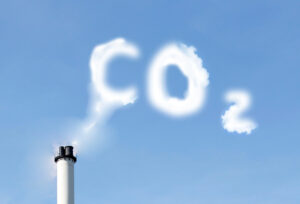Drax biomass plant is “by far the largest emitter of CO2 in the UK”, according to think tank

This report collates official data from the UK Emissions Trading Scheme registry and company annual reports to produce an annual ranking of emitters by specific asset, and by company, according to Ember.
The ranking focuses on direct carbon dioxide equivalent (CO2e) emissions across 2023, emitted within UK borders.
Biomass burning, steelworks and gas power are the top UK carbon polluters, it said.
"Drax power plant is the largest single source of carbon emissions in the UK, followed by Port Talbot Steelworks and Pembroke gas power station," added Ember.
The UK power stations emitted around 50 million tonnes of CO2 last year, the document stated.
These large power plants include biomass, gas and coal powered electricity, though the last UK coal power plant, Ratcliffe, closes in September 2024.
Ember added that Drax emitted 11.5 million tonnes (Mt) of CO2 in 2023, meaning it is responsible for the equivalent of 2.9% of total UK territorial emissions.
Burning wood for electricity, Drax power station emitted more CO2 than the next four power stations combined, and over four times the emissions of the UK’s remaining coal power plant, Ratcliffe on Soar (2.7 MT CO2e), said Ember.
The think tank went on to say that Drax power station generated less power (11.5 TWh) last year than in previous years, a fall from 12.7 TWh in 2022.
This means Drax produces just 8% of renewable electricity in the UK and less than 4% of the UK’s total electricity.
"When 2023 emissions are aggregated to a company level, Drax emitted more than any other in the UK," said Ember. "Although RWE is responsible for some of the largest gas power plants in the country, Drax is still responsible for the largest combined total emissions. The companies in the top table are largely responsible for power stations and large manufacturing works, although TotalEnergies also operates fossil fuel extraction facilities in the North Sea. Wood pellets have an equivalent carbon intensity to coal but are burned at higher volumes due to their low energy density, meaning that burning wood emits more carbon dioxide than coal or gas, per kWh of electricity."
Bioenergy Insight has contacted Drax for comment.















